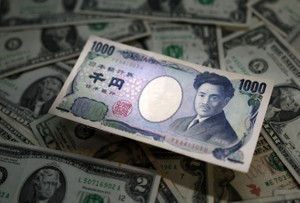THE ASAHI SHIMBUN
October 11, 2023 at 14:20 JST
 Yoshie Maeda, center, one of the plaintiffs in the lawsuit on Minamata disease victims, speaks at a news conference in Osaka on Oct. 10. (Issei Yamamoto)
Yoshie Maeda, center, one of the plaintiffs in the lawsuit on Minamata disease victims, speaks at a news conference in Osaka on Oct. 10. (Issei Yamamoto)
OSAKA--The central government and Kumamoto Prefecture both appealed an Osaka District Court ruling that expanded the definition of Minamata disease victims beyond the state’s standards and ordered compensation to be paid to plaintiffs.
The appeals were filed separately with the court on Oct. 10. Chisso Corp., the chemical manufacturer responsible for causing mercury poisoning by discharging industrial wastewater into Minamata Bay in the prefecture, filed its appeal Oct. 4.
An Environment Ministry official said the Osaka District Court’s Sept. 27 ruling “significantly deviates from international scientific knowledge as well as (past) rulings finalized by the Supreme Court.”
Ministry officials noted, for example, that the court recognized plaintiffs as suffering from Minamata disease even if the concentration of methylmercury in their hair is below World Health Organization guidelines.
The court presumed that the plaintiffs had been exposed to methylmercury if they had continuously consumed seafood that was available along the coast of the Shiranui Sea when the Chisso plant was discharging the contaminated wastewater.
The plaintiffs had been denied relief granted under a 2009 special measures law.
But the court recognized all 128 plaintiffs as victims of Minamata disease and ordered the central government, the Kumamoto prefectural government and Chisso to pay a total of 352 million yen ($2.36 million) in compensation, or 2.75 million yen per plaintiff.
The plaintiffs criticized the central government and the Kumamoto prefectural government for challenging the ruling.
“Are the government and the prefecture waiting for us to die?,” Yoshie Maeda, 74, one of the plaintiffs, asked at a news conference in Osaka on Oct. 10.
The lawsuit was filed in September 2014. Some plaintiffs have since died.
Lawyers for the plaintiffs, citing their advancing years, had urged the Environment Ministry not to appeal the ruling and resolve the case through talks at an early date.
“The ruling pointed out critical flaws in relief measures and offered a chance for the government to fundamentally rectify its mistake,” said Yoshiyuki Tokui, the lead attorney. “We will continue to ask the government to negotiate a settlement.
The appeals by the Environment Ministry and the Kumamoto prefectural government covered 122 plaintiffs.
The ruling only ordered Chisso to pay compensation for six of the plaintiffs, who it said were exposed to methylmercury before the government and the prefecture became liable.
Patients who have not been recognized as victims of Minamata disease under the special measures law have also filed similar lawsuits with district courts in Kumamoto, Tokyo and Niigata.




















Stories about memories of cherry blossoms solicited from readers
Cooking experts, chefs and others involved in the field of food introduce their special recipes intertwined with their paths in life.
A series based on diplomatic documents declassified by Japan’s Foreign Ministry
A series on the death of a Japanese woman that sparked a debate about criminal justice policy in the United States
A series about Japanese-Americans and their memories of World War II
Here is a collection of first-hand accounts by “hibakusha” atomic bomb survivors.